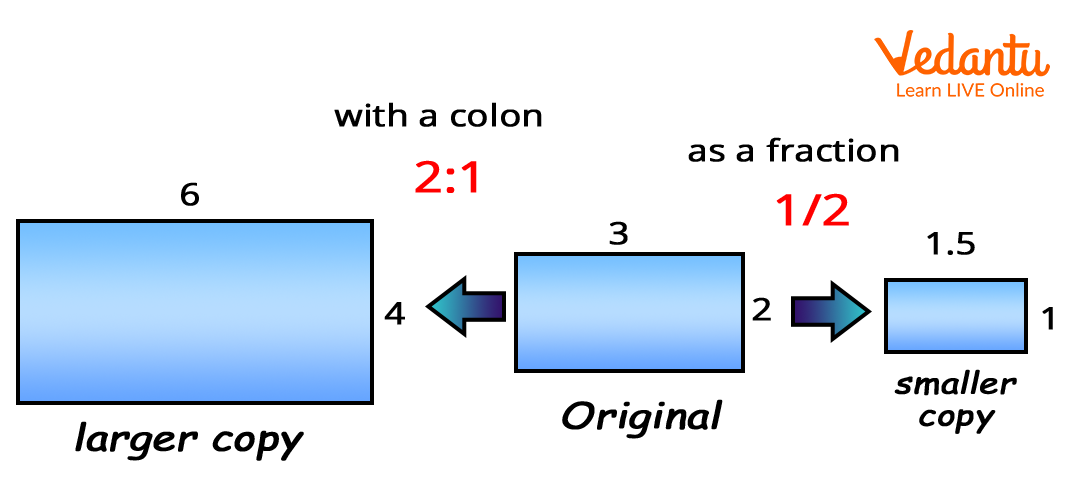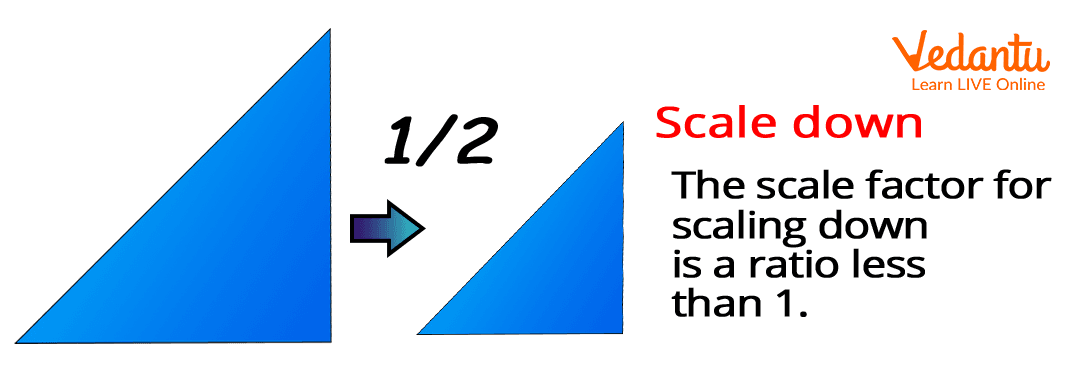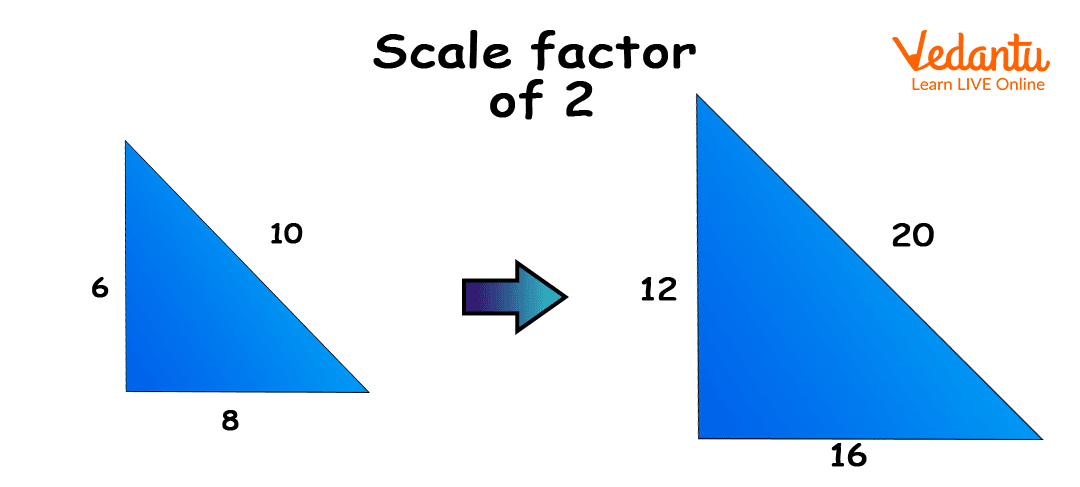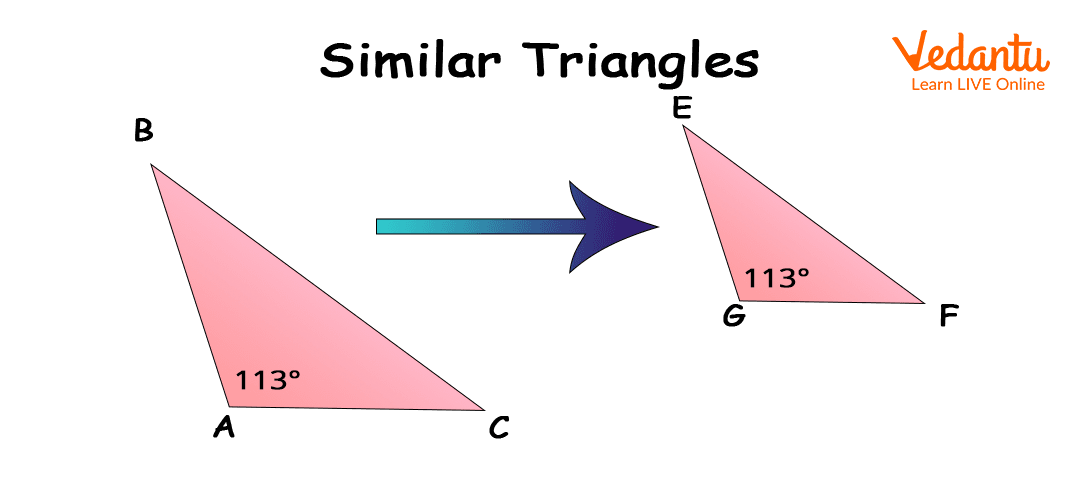




Introduction to Scaling
Have you ever clicked a photo using mobile or any camera? What do you see? An image, right. This image represents the object that you clicked. But, can you tell me whether the size of the image clicked and the original size is equal? No. It is so because you have either scaled-up or scaled-down the object size. Representation of an image or object by enlarging or shrinking is called ‘scaling’ of the image or object.
What is Scaling in Math?
Scaling is the factor which is used to represent the object size. The size of the object can be shown by increasing or decreasing its original size. In general, the represent size of the object increased for the small object whereas it decreased for the bigger object. Scaling is used for better viewing of an object. The ratio by which an object’s size increased or decreased is called as scale factor.
What is a Scale Factor?
Scale factor is the ratio between corresponding measurement of an object and representation of that object. The scale factor is a whole number or greater than 1 to make a larger copy. The scale factor is a fraction or less than 1 to make a smaller copy. Therefore, scale factor can be expressed by any number or fraction. Also, scale factor can be expressed using colon (:), such as
Original sized object : Representation sized object
where, Representation sized object = Any number x Original sized object (in case of larger copy)
or, Representation sized object =

Scale factor
Types of Scale Factor
There are two types of scale factor:
Scale-up Factor
Scale-down Factor
Scale-up Factor: To show the larger size of a small-sized object, we multiply by a number to the original size of the object. In this case, we multiply with the a number greater than 1 to the original sized object. To find the scale-up factor, we used the following formula:
Scale - up (Smaller to larger) = {Larger figure measurement} ÷ {Smaller figure measurement}

Scale Up
Scale-down Factor: To show the smaller size of a bigger-sized object, we divide by a number to the original size of the object. In this case, either we multiply with a number smaller than 1 or divide it by a number greater than 1 to the original sized object. To find the scale-down factor, we used the following formula:
Scale - down (larger to Smaller) =

Scale down
Scaling in Geometry
In Geometry, scale factors can be obtained from similar figures, or we can create another image using the scale factor over the original figure.
Example of Scaling in Geometry: In this example, we show the scale-up factor. Here, a scale factor of 2 is shown, which means that the new figure obtained will be twice the original figure. All the sides of the triangle multiplied by 2 to obtain the new figure.

Scale factor of 2
Why 2? Lets see the above given figure. In the first figure, we can observe that value of base, height and hypotenuse are equal to 8, 6 and 10 respectively. In the second figure, values of these are 16, 12 and 20. Comparing both the figures, we can calculate scale factor as:
Hence, the scale factor is 2.
Now, let us consider another example to understand it more.
Example: What is the scale factor from ΔABC to ΔDEF?

How to find the scale factor?
From the above-given figures, we can easily observe that the values of all sides are decreasing. So, here we need to find the scale-down factor. The point to be noted is that we can find the scale factor using the ratios of respective sides/same sides of both the triangles.
Remember: We can find the scale factor of an image using the values of corresponding sides, angles and diagonals.
Conclusion
From this article, we have learnt the meaning of scaling and types of scale factor. We also learn how to find the value of scale factor. To know more mathematical terms, visit our website.
FAQs on Scaling in Math
1. What do you understand by the term scaling?
Scaling is the linear transformation phenomenon in which the object either shrinks or enlarges with the scale factor value. If the scale factor is 1, the obtained image or figure is equivalent to the original image. If the scale factor is greater than 1, the new image is larger than the original image, whereas if the scale factor is smaller than 1, then the new image is smaller than the original image.
2. What is the difference between scale-up factor and scale-down factor?
Scale-up factor is used to find the larger size of an object or image. We used a microscope to see the larger image of an object. Also, in engineering drawing, the scale-up factor is used to represent the components of smaller sizes used in machines and various equipment.
Scale-down factor is used to find the smaller size of an object or image. Many software like AutoCAD or CATIA are used to draw the small-sized components of large machines. These software are also used for the 3D-drawing of construction sites.











